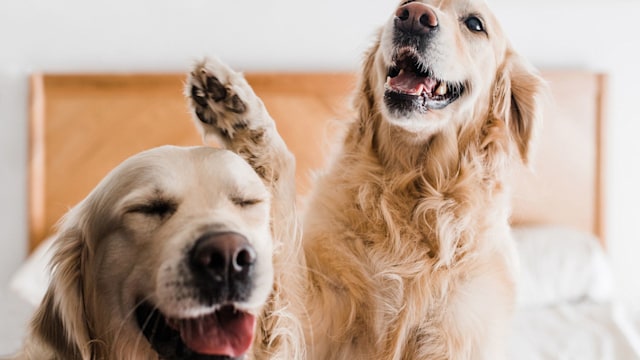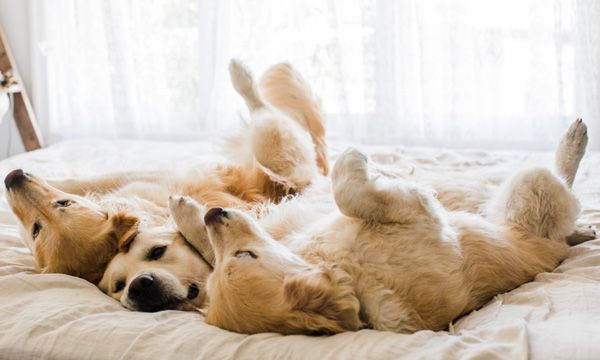As a nation of devoted dog and cat lovers, the health and happiness of our pets is key. Whilst caring for a valued and much-loved member of the family, all pet owners have the wellbeing of their animals at heart, but you may not be aware that over 50% of pets in the UK are actually overweight.
This is usually due to owners not knowing the ideal weight and food portion size for their pet’s individual breed and needs. Extra weight can cause unwanted risks to your cat or dog’s health and trigger diabetes and osteoarthritis, and ultimately, a shorter lifespan – so we spoke to the experts at Royal Canin to get some top tips on how to keep pets at their healthy best…
1. Spot the signs
On a physical level, your pet may look overweight or underweight. Can you feel their ribs easily using light pressure? Is their waist easily visible? Weigh your cat or dog then make a note so you can compare it next time. Your vet can also give you an indication of their ideal weight and help you monitor it at future appointments to encourage necessary weight loss and maintain your pet’s optimum health.
2. Discover body condition scoring
Weighing your dog or cat isn’t the only way to check their general health. Body condition scoring is a tool created to help you understand their ideal shape, using prompts and physical checks you can carry out yourself. Similar to a human’s BMI, the scoring uses a 9-point system ranging from severely underweight at 1, to obese at 9. A well-proportioned cat or dog will have a score of 4-5 with ribs that can be easily felt with light pressure, a waist that can be seen from above and an abdomen that tucks up behind their rib cage when seen from the side. Royal Canin have created a handy tool to monitor a dog body condition score and a cat body condition score, where owners can answer a few short questions tailored to their pet’s breed to give you all the stats and information you’ll need.
Lindsay Calcraft VN CertCFVHNut, Royal Canin Weight Management Specialist, told HELLO! “the latest PDSA Animal Wellbeing (PAW) report shows that there has been a rise in pet obesity as a direct result of lockdown and COVID-19. With already over half of the UK’s pets above ideal weight or having obesity, this increase is worrying. If you are concerned about your pet’s weight we strongly recommend you have a conversation with your veterinary practice for a Body Condition Score assessment. Many veterinary practices offer these free of charge and they can be done virtually. You can also gain invaluable advice on feeding and giving treats to your pet, helping you to keep your pet healthy.”
3. Tailor their activity
Healthy weight starts with healthy habits, even for pets! Exercise is key to keeping dogs and cats mentally stimulated and active. The amount of activity they need varies depending on their age, weight and breed. Cats are naturally active animals who thrive on short bursts of activity, while dogs love to spend lots of time outdoors whether walking, running, or even swimming.
Similarly, consider where they spend most of their time. Outdoor cats will happily allocate several hours a day to roam their environment and hunt, while indoor cats like to spend a lot of time engaging with their owners through toys and physical interaction – aww! On the canine front, younger dogs and larger breeds need two or more active sessions outdoors a day, whereas older dogs prefer a gentle stroll in the morning and evening.
4. Customise their environment
Care is needed to ensure that a cat’s indoor environment doesn’t become boring to them, leading to them being inactive and gaining extra weight. Cats are clever animals who enjoy puzzle feeders and hunting for dried food, so it’s recommended they have access to a cat tree that’s tall enough for them to use whilst fully stretched to strengthen their muscles, and so that they maintain a healthy weight for a cat.
Meanwhile, if your dog enjoys socialising, after lockdown you could team up with another owner for a group walk around the park, or check for dog walking groups in your local area (remember to be COVID-19 compliant if meeting up with others outside of your household). When you can’t get outside due to poor weather or ill health, hide and seek is a game that most dogs adore – hide one of their favourite toys to keep brains active and senses alert. You can also try ‘hide the treat’ – but hide some of their daily rations rather than extra treats to ensure you’re not adding extra calories. Clever, right?
5. Keep an eye on portions
Many owners think their dog or cat needs more food than they do – meaning lots of pets are overfed. For maintaining an ideal dog weight, a good starting point is to follow the feeding guide on their pet food. Also consider the size of your dog – a small breed such as a Chihuahua will require much fewer calories than a St. Bernard.
If they’re a working dog they’ll also need more food than one who spends most of their time indoors with only short walks. A dog may beg for human food at mealtimes when they’re not actually hungry but are seeking attention from you and have become bored or want more affection. If signs of begging or consistent hunger persist, always consult your vet to rule out underlying issues such as worms.
Cats who like to be on the move will require more energy from food than one who is sedentary and mainly stays indoors. Also, consider if your cat has been spayed or neutered, because sterilisation changes their metabolism, and you may see an increase in their appetite by 20-25% when their actual energy requirement has reduced by 30%. Also, lots of cats prefer to graze over the course of a day, and in this case it’s best to allocate a portion of food for the whole day, then leave the bowl out and allow them to revisit rather than topping it up or making separate portions.
For more information about keeping your pets healthy, visit royalcanin.co.uk. Follow @royalcanin_uk on Instagram or follow the hashtag #PerfectingPetWeight.











